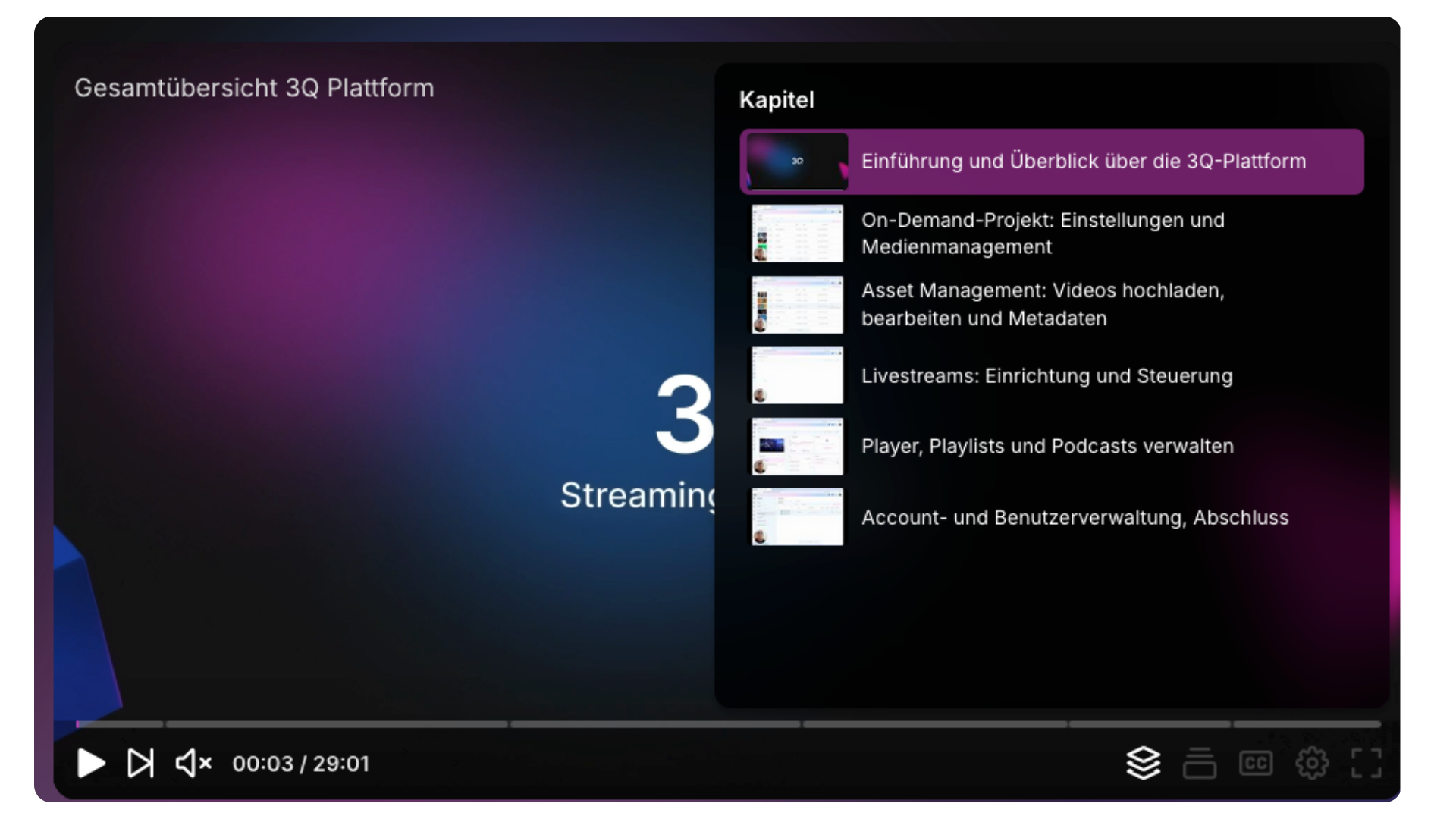Accessibility for videos

Accessibility for Videos
Video is the most used content format and is increasingly being used by companies and institutions in their internal and external communication. At the same time, more and more video content providers attach importance to offering their digital content in an inclusive and usable way for everyone. This requires the integration of a player that meets the requirements of the Web Content Accessibility Guidelines (WCAG).
Accessibility and the current law
Since the entry into force of several Europe-wide directives and national laws on accessibility, the issue of digital accessibility has come to the foreground. Public institutions and commercial companies must make their online offerings and media content accessible to people with disabilities.
In Germany, public authorities are required to ensure that their websites and apps comply with at least WCAG 2.1 at level AA. A WCAG 2.1-compliant video player meets these requirements and makes it possible to provide video content in an inclusive manner.
What does WCAG 2.1 mean for video players?
A WCAG 2.1 compliant video player must meet specific technical requirements:
All control elements The video player must be barrier-free. This means that you must be able to control the player with the keyboard without using a mouse.
The visual focus It should be clearly visible. Buttons, icons, or texts must have good contrast in order to be easily recognized by people with visual impairment. Clear focus display and intuitive keyboard shortcuts are mandatory.
Also for screen reader users All identifiable controls must be labelled. The video player should therefore be recognized as a video. In addition, all control elements must be named in such a way that they are displayed in an understandable way (via alternative texts) by a visually impaired person with a screen reader. It is also important for the screen reader that a video is not played automatically. The video would be superimposed on the output of the screen reader.
For the audio description should the player have an AD control element or offer the option to activate an audio track with audio description in the language settings. If the player does not offer this option, you can alternatively provide the audio description via an extra video. For people with visual disabilities, audio descriptions are very important so that visually relevant scenes are described.
Although subtitles can also be burned into a video, i.e. are permanently visible (open captions), should a barrier-free player be able to add subtitles via a control element. These subtitles should be customizable. This includes adjusting font size, font color and font, as well as adapting opacity. People with hearing disabilities need subtitles to track spoken content and sounds. Added value is provided by automated translation of subtitles. They help to overcome language barriers and help language learners understand.
Operation on various devices: Accessibility also means that a player works equally well on desktop PCs, laptops, tablets, and smartphones. Flexible scalability and responsive design ensure that there are no restrictions on the various devices.

Why should companies and institutions use a WCAG 2.1 compliant player?
Statutory requirements comply: Many public institutions must comply with these guidelines, and more and more companies are also increasingly being held accountable.
Minimize risks: A compliant player reduces the risk of legal consequences.
Reach larger audiences: A barrier-free offer can be used by everyone — inclusive, user-friendly and often more SEO-friendly.
Positive public image: An inclusive digital offering demonstrates social responsibility and strengthens the company's reputation.
Versatility & future security: WCAG 2.1 is a standard that will also serve as a basis in future versions and thus ensures a sustainable digital strategy.
Typical use cases for using barrier-free video players
In general, the use of a barrier-free video player always makes sense, regardless of which content is transmitted and for which purpose. Typical applications at commercial companies and institutions include:
Corporate communications, such as to announce products, services, or important company announcements via webinars and live video streams.
Training and training videos for employees who also need subtitles and audio descriptions.
Higher education, e.g. to publish lecture recordings and learning materials at universities and universities of applied sciences. A barrier-free player gives students with disabilities equal access.
Authorities and public institutions use barrier-free players to provide informational videos, live streams of meetings, citizen information or explanatory videos on regulatory processes. Subtitles or audio descriptions make this content more inclusive.
How a professional video platform can support
When video content is published regularly or broadly streamed, it is important to comply with all WCAG 2.1 requirements. This is where professional streaming providers such as 3Q come in:
Deploying an accessible player: You can seamlessly embed a video player on your website that already meets the basic requirements (e.g. keyboard usability, subtitle support, appropriate color contrasts).
Reliable streaming infrastructure: A high-performance streaming platform is essential to enable interference-free live broadcasts or on-demand formats.
Professional advice: From the integration of subtitles and translation to the design of the operating elements, you will receive expert advice. Learn how to make both small webinars and large-scale streaming events barrier-free and easily scale them.
Conclusion
A video player that complies with WCAG standards is now a must. The legal framework and growing awareness of inclusion make the accessibility of video content essential for public institutions as well as for companies. With a compliant player, you not only create equal opportunities for people with disabilities, but also increase your reach and the positive image of your organization. Professional streaming providers such as 3Q take care of the technical implementation and ensure that your video content is made available to all people.
Newsletter
Abonnieren Sie unseren monatlichen Newsletter, um immer auf dem Laufenden zu bleiben!

%202.png)
.png)







